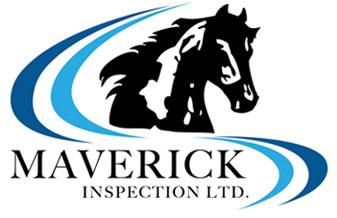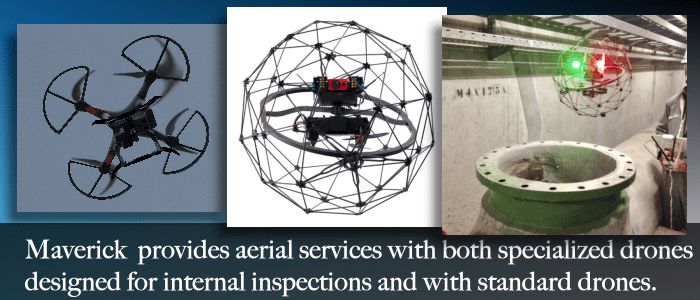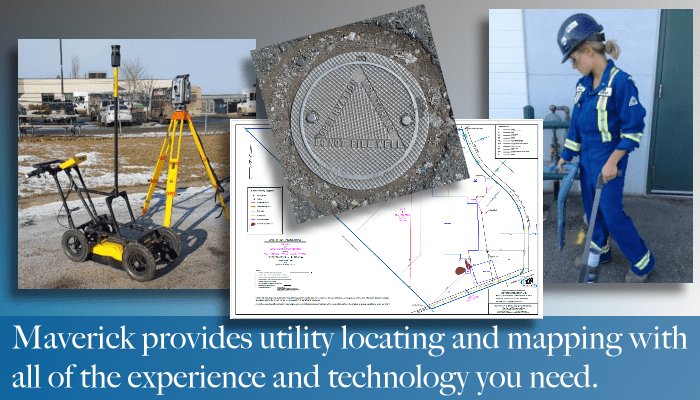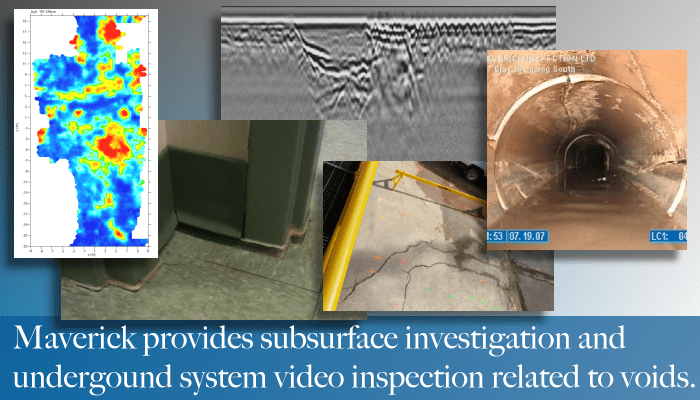MAVERICK’S
PRIMARY
SUBSURFACE
TECHNOLOGY
Ground-penetrating Radar (GPR) is the flagship technology in Maverick’s Subsurface Division. GPR is the science of penetrating the subsurface with radio waves in order to gather information about underground features and facilities.

Utility Locating

Geomatics Mapping and Modeling

Push Reel

Drone and RPAS Imagery
Ground Penetrating Radar
WHAT SETS MAVERICK APART FROM ALL OTHERS?
From Edmonton Alberta, Maverick has been performing GPR services in Western Canada since 2001, on all types of sites for all industries. We have a wide range of systems, not limited to one manufacturer, frequency, make, model, generation, or deployment platform. Every GPR system has strengths and weaknesses, and experience and training is required to select the right option, or even combine multiple frequencies or deploy complementary technologies.
Maverick’s commitment to safety, quality, and reliability extends beyond training, experience, and data gathering procedures. Our team includes an Electronic Technologist with a decade of experience testing, calibrating, maintaining, and repairing remote sensing geoscientific equipment on a component level.
About Ground Penetrating Radar
In addition to Ground-penetrating Radar, Maverick deploys subsurface technology such as Magnetometry, EM Profiling, Seismic, Conductivity, Resistivity, and Acoustics.

Call For a Quote:
780-467-1606
TYPICAL GROUND-PENETRATING RADAR APPLICATIONS
FAQ: IS GPR LIKE X-RAY RADIOGRAPHY OR ULTRASOUND?
- Concrete scans to locate and map out conduits, post-tension cables, rebar, and other features prior to cutting or coring
- Mapping out structural steel, concrete thickness, and other structural elements for engineering studies
- Underslab void and saturation mapping
- Utility locates
- Archeology & forensics support
- Cemetery and First Nations burial site mapping
- Mapping out subsurface features and conditions prior to critical crane lifts
- Contamination plume mapping when other technologies cannot be deployed effectively
- Locating of underground storage tanks
- Gathering data for gravel and placer mining exploration
- Sub-bottom profiling of lakes, ponds, peat, etc.
- Ice road thickness studies
- Asphalt thickness studies
If there is a situation where Ground Penetrating Radar does not appear to be as effective as desired for any reason, and x-ray is deemed more applicable for the application, Maverick Inspection will inform you. Maverick has a good working relationship with x-ray providers, and understands the benefits and limitations of both technologies. There have even been job-sites in the past where neither technology alone could provide adequate information, and they have been used together to tackle complex inspection scenarios
F.A.Q.
What is Ground Penetrating Radar (GPR)?
Where is GPR best used?
What are some limitations of GPR?
Is GPR similar to X-Ray?
Related Services
Drone, RPAS and Unmanned Aerial Vehicles
Use drones to navigate into spaces that are inhospitable to manned entry.
Utility Locating
Between Industrial, commercial and residential utility located Maverick Inspection Ltd. has the experience to get the job done right.
Remote Video Inspection
Use remote video inspection to enhance your sub surface inspection.



